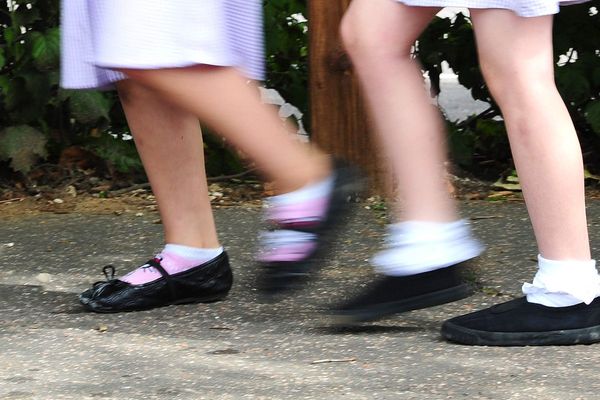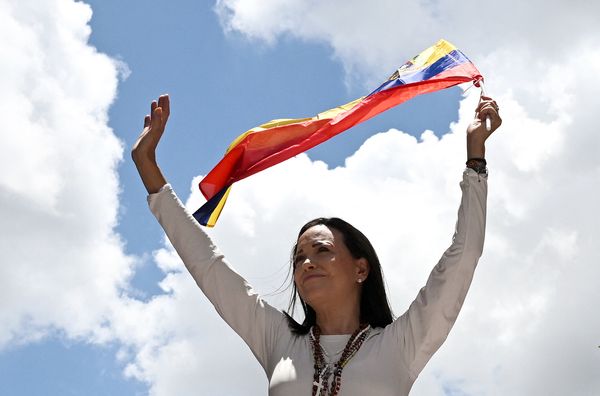
Cuba has lifted a mask mandate in place for two years while in China, Shanghai’s draconian coronavirus lockdown has ended after two months.
Authorities in Cuba say a successful vaccination drive has contributed to a sharp drop in cases and nearly three weeks without a death from COVID-19.
Cuba has vaccinated 94 per cent of its population with at least one dose of its home-grown vaccines, according to a Reuters tally.
Health minister José Ángel Portal said the wide-ranging vaccination program had led to a “radical change” in contagion and health risks and prompted the decision to do away with masks in most scenarios.
Officials said masks will remain mandatory for those in hospitals, as well as for people with pre-existing conditions or respiratory infections.
Across much of Cuba, which is suffering from a severe economic crisis and shortages of food and medicine, brightly-colored and varied homemade masks had become the norm and many appeared reluctant on Tuesday to leave home without them.
Most are reused and dangle from porches and clothes lines to dry in the sun.
“I am going to continue with the mask,” said Enrique Otero, a 63-year old mechanical engineer.
“I am diabetic and I take a bus in Havana.”
Cuba’s health ministry said cases of coronavirus had fallen for nine successive weeks, with daily infections plunging to under 100 in the latter half of May, and just two deaths in the month, according to ministry data.
Cuban scientists have said their protein-based Abdala, Soberana 02 and Soberana Plus COVID-19 vaccines give upwards of 90 per cent protection against symptomatic illness when offered in three-dose schemes although that research has not yet been vetted by the World Health Organisation.
Following two months of frustration, despair and economic loss, Shanghai’s draconian COVID-19 lockdown ended at midnight, prompting celebrations tempered with fear that an outbreak could return.
Most of Shanghai’s 25 million residents can now freely leave home, return to work, use public transport and drive their cars – a moment that for many in China’s largest and most cosmopolitan city felt like it would never arrive.
In the early hours of Wednesday morning, small groups gathered in the city’s former French Concession neighbourhood and whistled, shouted “ban lifted” and clinked glasses of champagne.
Earlier, streets were lively as residents picnicked on grassy patches and children rode bikes down car-less roads.
Dancing retirees, a common evening sight in Chinese cities, strutted their stuff for the first time in months in open air plazas and along the Huangpu river.
Shanghai Disneyland, which has yet to announce a reopening date, livestreamed a lightshow to “celebrate the lifting of Shanghai’s lockdown”.
They used a Chinese expression that also means “ban” that city officials have avoided.
Under streetlamps, barbers gave haircuts to residents who had grown shaggy under lockdown.
On the WeChat social media platform, shops announced their reopening plans.
“I walked the dog and the dog is pretty excited because it has been a really long time for it to come outside,” said Melody Dong, who was looking forward to eating hot pot and barbecue – foods that are difficult to make at home.
Shanghai’s ordeal has come to symbolise what critics say is the unsustainability of China’s adherence to a zero-COVID policy that aims to cut off every infection chain, at any cost, even as much of the world tries to return to normal despite ongoing infections.
The lack of a roadmap to exit from an approach that is increasingly challenged by the highly contagious Omicron variant has rattled investors and frustrated businesses.
COVID-19 curbs in Shanghai and numerous other Chinese cities have battered the world’s second-largest economy and tangled global supply chains, although case numbers have improved and curbs have eased from the depths of April’s lockdowns.
China says its approach is needed to save lives and prevent its healthcare system from being swamped.
“The mood tonight is a bit like high school days. On the eve of the school year I was full of expectations for the new semester but I feel a little uneasy in my heart,” wrote one user of the Twitter-like Weibo.
During two months, numerous residents of the country’s most important financial and economic hub struggled to get enough food or medical care.
Families were separated and hundreds of thousands were forced into centralised quarantine facilities.
At the factories and offices that remained open – including those of Shanghai government officials – workers lived on-site in “closed-loops,” bunking on makeshift beds, with many of them only now able to return home.
Curbs were lifted for about 22.5 million people in low-risk areas.
Residents must still wear masks in public and avoid gatherings.
Restaurant dining remains banned while shops can operate at 75 per cent capacity.
Residents will have to test every 72 hours to take public transport and enter public venues, heralding what may become a “new normal” in many Chinese cities.
Those testing positive, and their close contacts, face onerous quarantines.
During lockdown, Shanghai residents staged rare protests, banging on pots and pans from their windows and evading censors to vent on China’s heavily policed social media.







